History of Solar do Unhão, Salvador
The history and architecture of Solar do Unhão date back to the 18th century and are located on the shores of Todos os Santos Bay in Salvador, Bahia.
The architectural complex consists of the main house, the Chapel of Nossa Senhora da Conceição, a private jetty, a aqueduct, a fountain, a slave quarters and an alembic with tanks.
The Solar do Unhão complex currently houses the Bahia Museum of Modern Art (MAM-BA).
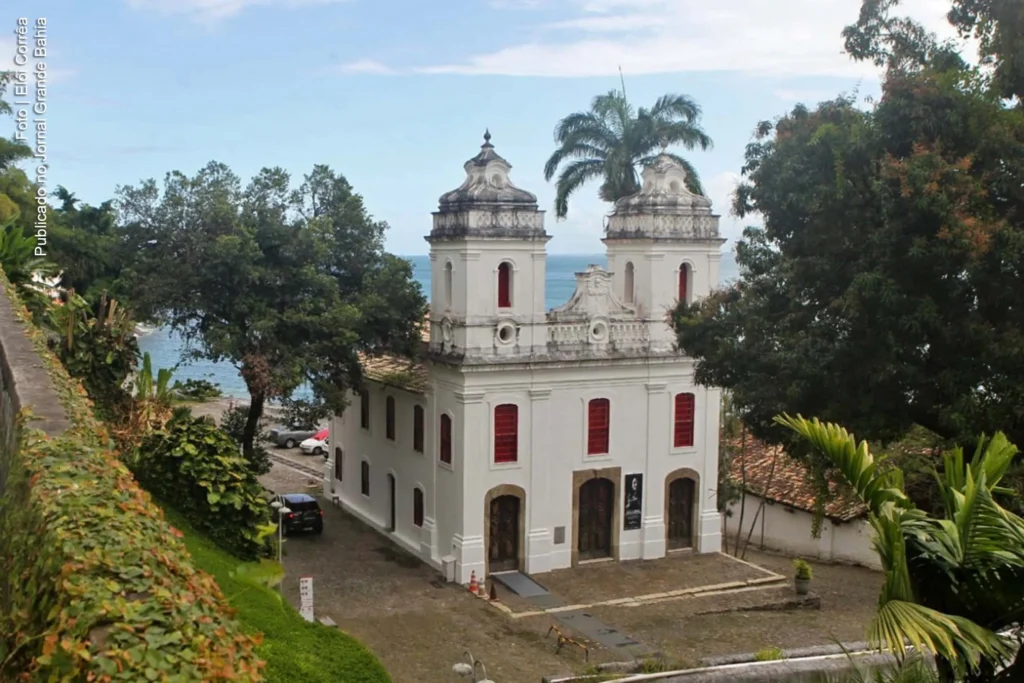
1. First owners and development
In 1690, the estate was occupied by Pedro Unhão Castelo Branco, who sold it in 1700 to José Pires de Carvalho e Albuquerque (the old man). He built a morgado in the area and led the manor house into its golden age. From this period date the Portuguese Tile Panels and the Stone Fountain, both from the 18th century, which stand out for their artistic quality and historical importance.
2. The Chapel of Our Lady of the Conception
The earliest reference to the Chapel of Our Lady of the Conception dates back to 1740, when the baptism of one of the owner’s granddaughters was recorded. The religious space is harmoniously integrated into the architectural complex and reveals the traces of religiosity associated with the casa-grande.
3. Economic decline and new functions
With the decline of the sugar economy, the manor house was rented out and entered a period of functional devaluation. At the beginning of the 19th century, it became the property of Antônio Joaquim Pires de Carvalho e Albuquerque, the future Visco of Torre de Garcia D’Ávila, and was used as the family’s urban residence.
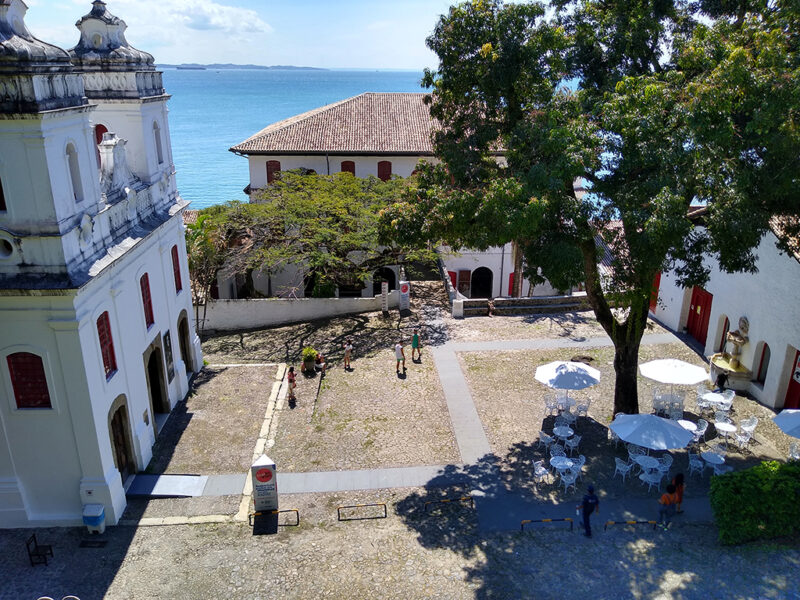
4. Factory, pier and various uses
The structure of the old sugar mill was adapted to house a snuff factory, which was active between 1816 and 1926, and later, in 1928, it was transformed into a quay.
Later, the building was used as a warehouse for goods destined for the port of Salvador, and during the Second World War it was used as a marine barracks.
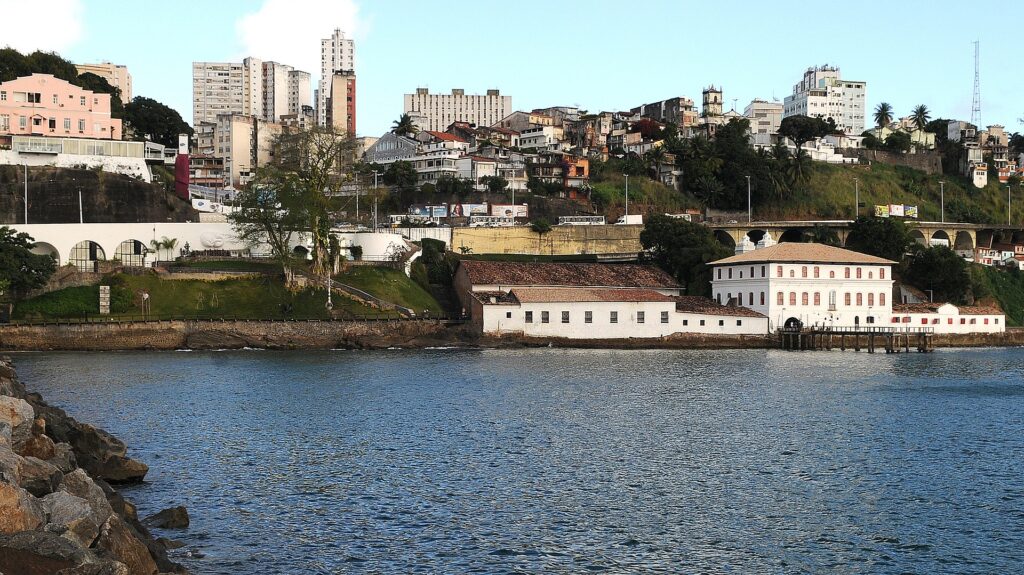
5. Listing and restoration
The architectural complex was listed in the 1940s by the National Historical and Artistic Heritage Service (SPHAN) in recognition of its historical and cultural importance. It was then purchased by the Government of the State of Bahia to house the Museum of Modern Art of Bahia.
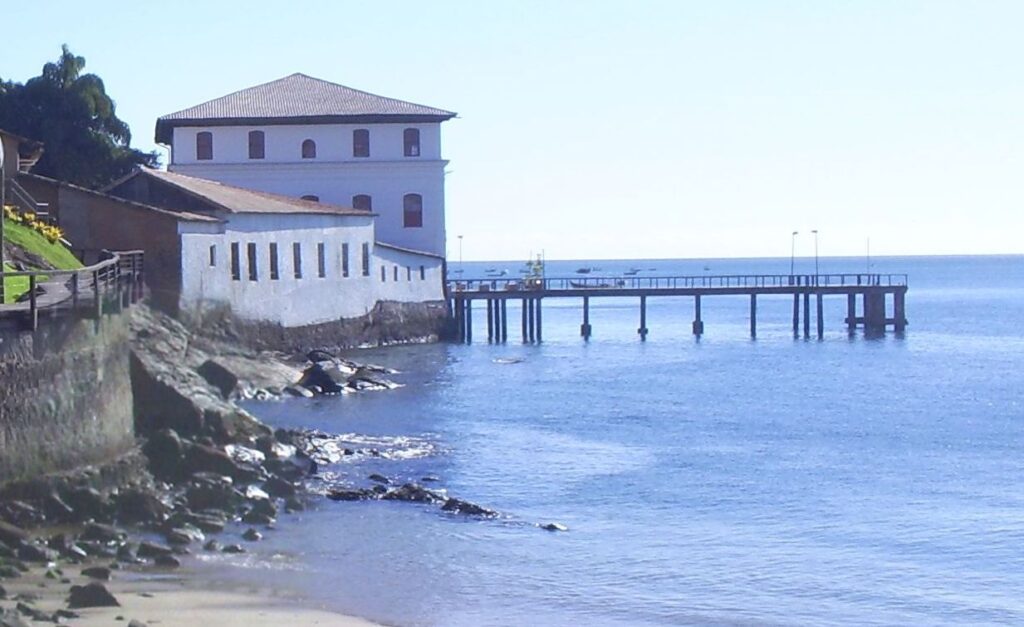
6. Foundation of the Bahia Museum of Modern Art
After a thorough restoration under the responsibility of the Italian-Brazilian architect Lina Bo Bardi, the museum was inaugurated in 1969. Its current structure comprises eight exhibition halls, a theatre-auditorium, a video room, a specialised library and a database on contemporary art.
7. Art collection
The MAM-BA has a diverse collection of contemporary art, bringing together around a thousand works. Among the artists represented are names such as Tarsila do Amaral, Cândido Portinari, Flávio de Carvalho, Di Cavalcanti, Rubem Valentim, José Pancetti, Carybé, Mário Cravo and Sante Scaldaferri.
8. Cultural programme
The museum’s programme includes temporary exhibitions, meetings with artists, cycles of debates, workshops, lectures and cultural activities such as the renowned “Jazz no MAM” project. These activities reinforce the museum’s role as a centre for the dissemination of contemporary culture in Bahia.
9. Sculpture Park and Complementary Spaces
Outside is the Parque das Esculturas (Sculpture Park), a permanent outdoor exhibition inaugurated in 1997, as well as the MAM Cinema Room and a café. On the seafront are works by authors such as Bel Borba, Carybé, Chico Liberato, Emanoel Araújo, Fernando Coelho, Juarez Paraíso, Mário Cravo Júnior, Mestre Didi, Sante Scaldaferri, Siron Franco, Tati Moreno and Vauluizo Bezerra.
10. Carybé’s contribution
The artist Carybé was also responsible for the design of the iron railing that surrounds the space, as well as a concrete slab at the end of the garden and at the entrance portal. This work features a composition with the symbol of the sun and stylised elements of acarajé, promoting a dialogue between art, Afro-Bahian culture and regional identity.
11. Video about the history and architecture of Solar do Unhão in Salvador
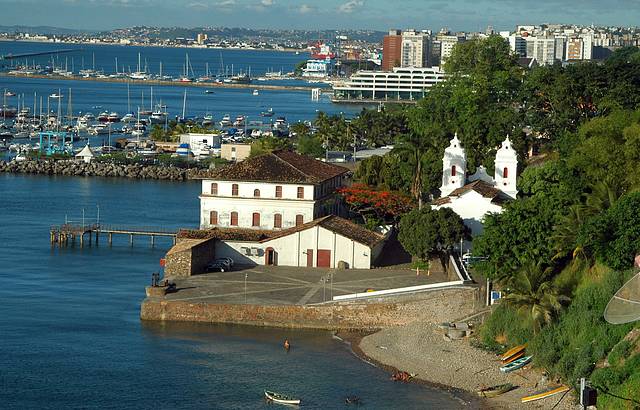
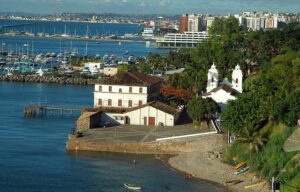
História do Solar do Unhão am Salvador BA05:14
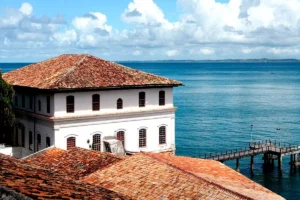
Vista de cima do Solar Unhão em Salvador01:41

Museu de Arte Moderna da Bahia - MAM02:55
Bahia Museum of Modern Art (MAM-BA)
If you’re going to spend your weekend in Salvador enjoying modern art, looking at the beautiful and letting the atmosphere of the city envelop you, with an unforgettable sunset over the sea of Bahia, to the sound of good live jazz, your destination is the Museum of Modern Art of Bahia.

A place for the senses
As well as housing countless works of art, MAM-BA is located in one of the most beautiful spots in the city, with a spectacular view of All Saints Bay.
On Saturdays, the space comes alive with the famous JAM no MAM, which attracts visitors and locals alike to enjoy quality jazz in a stunning setting.
History and architecture
The museum is housed in the Solar do Unhão, a 16th century building overlooking the bay. MAM was founded in 1960, in the foyer of the Castro Alves Theatre, and it wasn’t until 1963 that it moved into the manor house as its final headquarters.
The famous Italian architect Lina Bo Bardi was responsible for designing the museum. Her proposal was to create a museum-school that would promote and give visibility to the cultural production of the North East.
One of Lina’s main interventions was the demolition of the second floor of the villa in order to install a monumental wooden staircase, made only with fittings, without nails, inspired by ox carts.
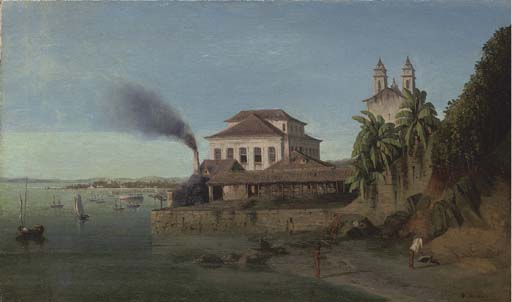
A reference in contemporary art
Today, MAM-BA is the most important space for contemporary art in Bahia and one of the most prestigious in Brazil. The museum receives around 200,000 visitors a year and has
- Five exhibition halls
- Open-air gallery – the sculpture park
- Cinema room
Characteristics and architecture of Solar do Unhão
Solar do Unhão, also known as Quinta do Unhão, is a historical site from the 18th century on the shore of Todos os Santos Bay. The complex consists of
- The Manor House
- The Our Lady of the Conception Chapel
- A private jetty
- Aqueduct
- Fountain
- Senzala
- An alembic with tanks.
Built on an embankment at the foot of the Salvador geological fault, it served as a trading post for the sugar from the Bahian sugar mills.
Location and surroundings
The privileged location offers an integrated landscape with a small pebble beach, a green hillside and a group of popular houses in Gamboa de Baixo.
Access to the manor house is via a four-arched bridge decorated with Baroque polychrome tiles made in Lisbon (1770-1780).
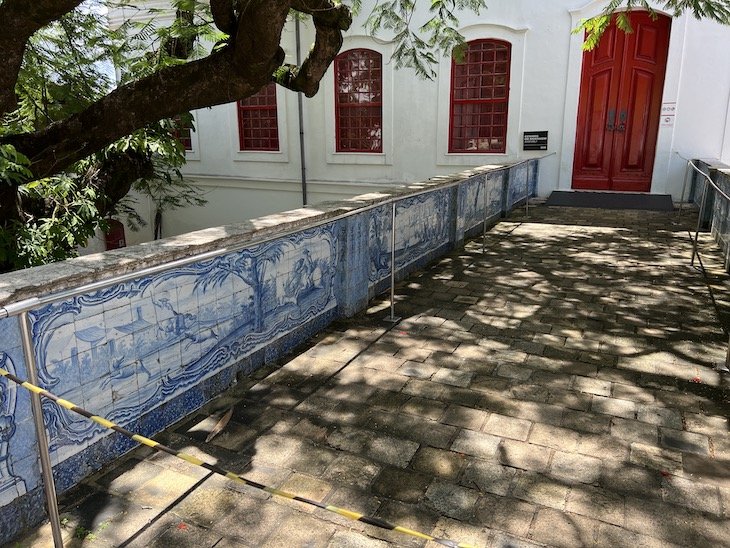
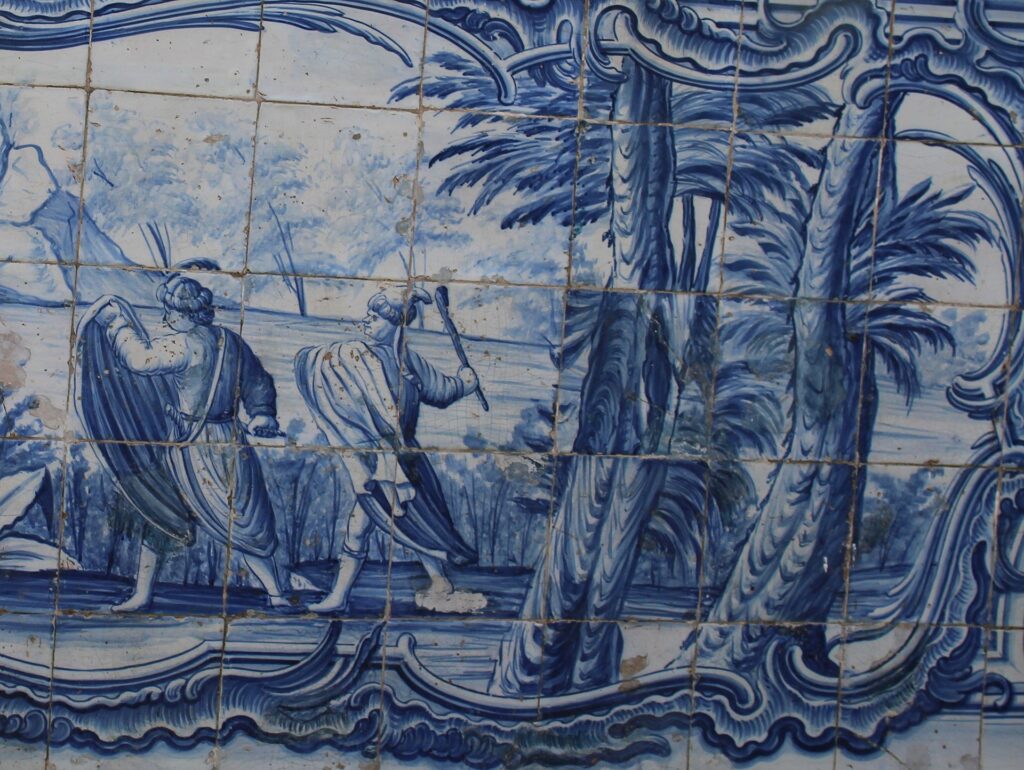
Architectural details
- The mansion has three floors: the ground floor, the noble floor and the second floor (added in the 19th century).
- The stone masonry structure and brick arches.
- Gabled and hipped roofs.
- Colonial sash windows, designed to maximise the use of natural light.
The chapel has a late rococo facade and a layout typical of early 18th-century churches. The nave and chancel are the same width and height, an unusual architectural feature.
Alterations and uses
In the past the manor house was used as a
- Snuff Factory
- Trapiche
- Sawmill (chapel)
- Rice husking industry, powered by a natural waterfall which is still visible.
The complex functioned as a city mill, with a large house, chapel and slave quarters.
Historical aspects
- 1690: residence of the judge Pedro de Unhão Castelo Branco.
- Early 1700s: bought by José Pires de Carvalho e Albuquerque.
- 19th century: owned by Antônio Joaquim Pires de Carvalho e Albuquerque.
- 1928: sold to the State of Bahia.
Restoration and conservation
- 1946: Stabilisation and cleaning works
- 1960: The construction of the Avenida Contorno threatened the manor house. The architect Diógenes Rebouças proposed an alternative layout.
- 1962/1963: Refurbishment to house the Museum of Popular Art of Bahia, designed by Lina Bo Bardi.
Other points of interest
- The baroque fountain in dark sandstone, with a frown and shells, was fed by an aqueduct.
- The lower sheds were used to store goods and house enslaved people, who were also traded there.
- Rails and loading trolleys are still visible as evidence of the warehouse‘s past.
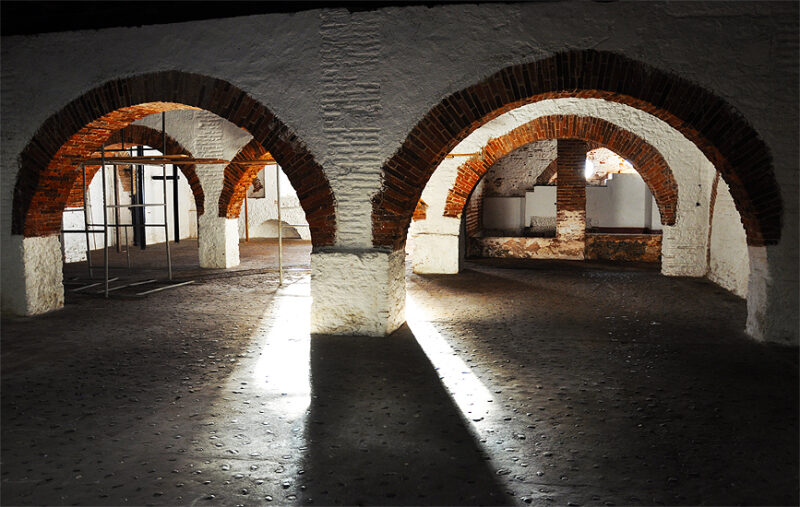
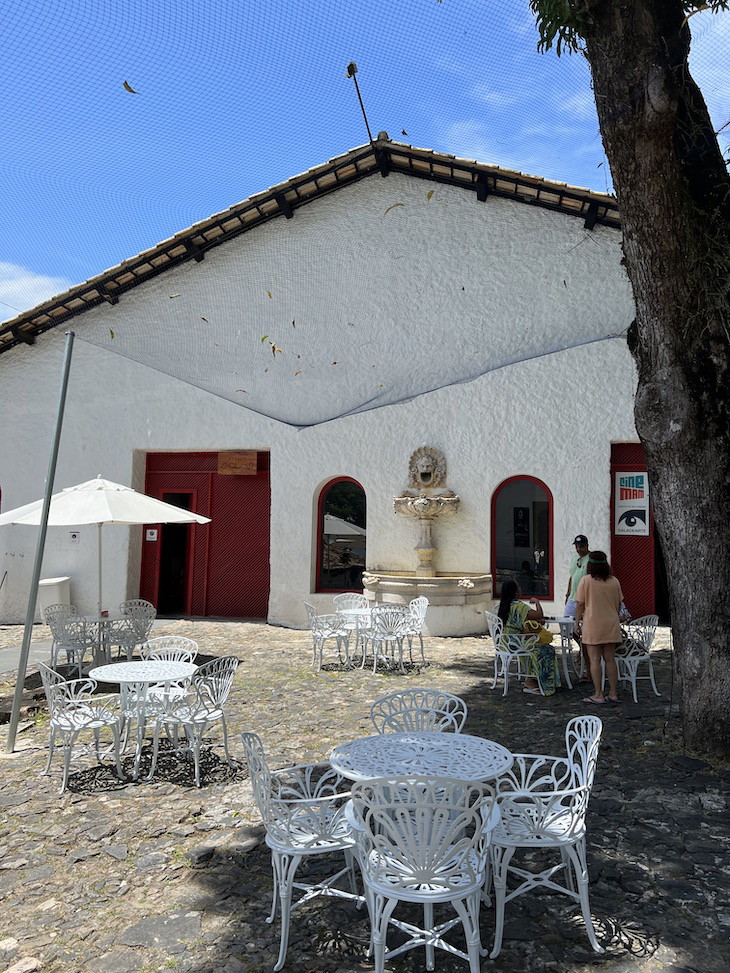
See also History and sights of Avenida Contorno in Salvador BA.
History, architecture and monuments of Solar do Unhão in Salvador
Publicações Relacionadas
Rio Vermelho Neighbourhood in Salvador's Nightlife
Discover the Magnificence of Nossa Senhora de Monte Serrat Fort
Learn about the history of the construction of the Lacerda Lift
Discover the 23 wonderful beaches of Salvador de Bahia
History of the Church of Nosso Senhor do Bonfim in Salvador
Palaces in Salvador to visit and learn about Brazil's history
Tourist attractions in the Gamboa neighbourhood in Salvador BA
Prostitution, Sex, Bars and Nightclubs in Salvador de Bahia
Church of the Third Order of St Francis History
Tourist attractions for children in Salvador de Bahia
Journey into the Sacred Art of Catedral Basílica de Salvador
History of the Forts and Lighthouses of Salvador
Convent and Church of Santa Teresa and its History
What's the best way to celebrate Carnival in Salvador de Bahia
Exploring the Architectural Marvels: Churches of Salvador
Discover the Charm of Parks and Squares in Salvador de Bahia
History of the Church of São Pedro dos Clérigos in Salvador
Discovering the Origins of the Senhor do Bonfim Ribbons
This post is also on:
![]() Português
Português ![]() English
English ![]() Deutsch
Deutsch ![]() Español
Español ![]() Français
Français



















